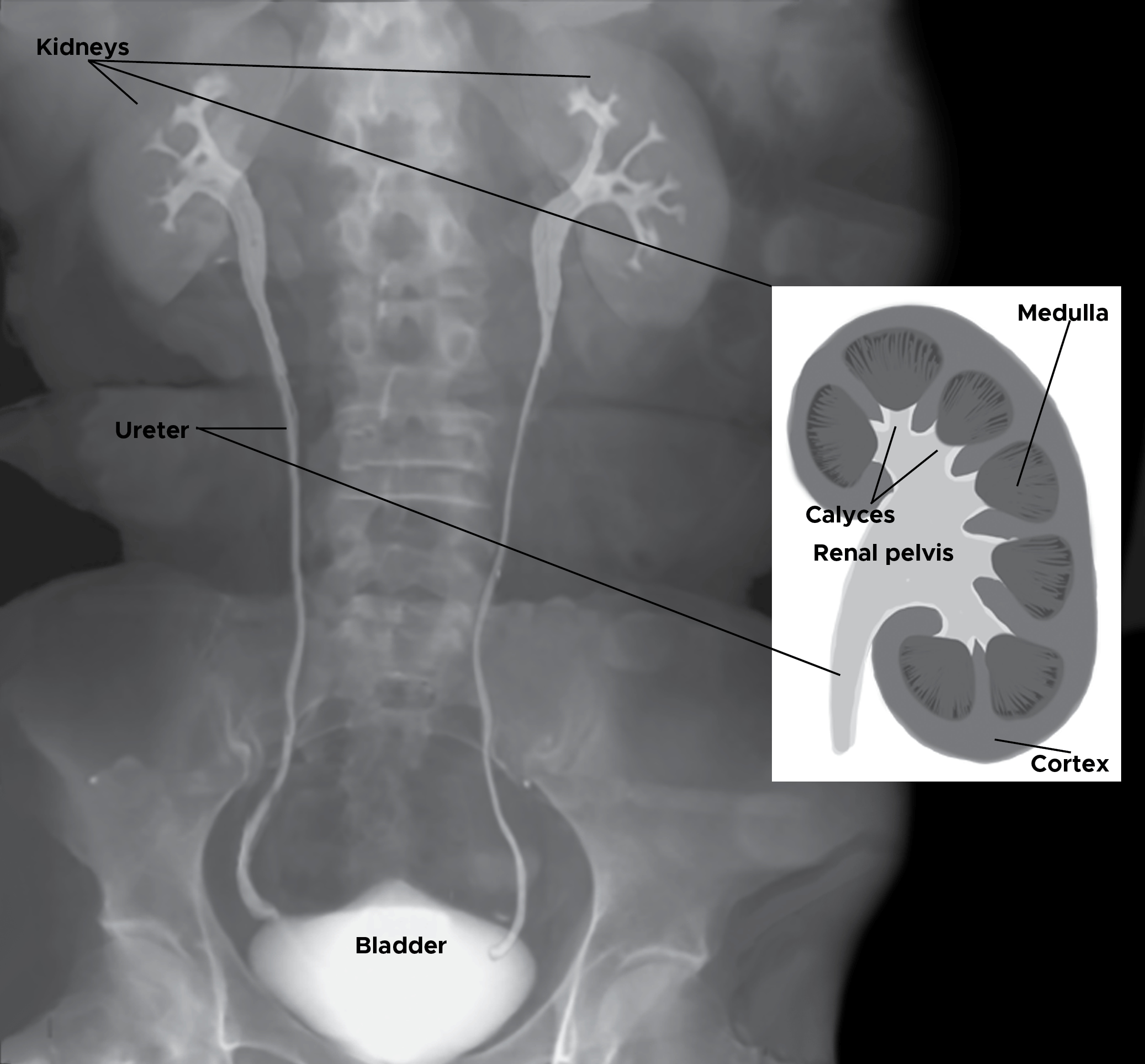[2]
Reisner DC, Elgethun MT, Heller MT, Klepchick PR, Hartman MS. Congenital and Acquired Disorders of Ureteral Course. Current problems in diagnostic radiology. 2017 Mar-Apr:46(2):151-160. doi: 10.1067/j.cpradiol.2016.04.002. Epub 2016 Apr 14
[PubMed PMID: 27207823]
[3]
Tonar Z, Zát'ura F, Grill R. Surface morphology of kidney, ureters and urinary bladder models based on data from the visible human male. Biomedical papers of the Medical Faculty of the University Palacky, Olomouc, Czechoslovakia. 2004 Dec:148(2):249-51. doi: 10.5507/bp.2004.052. Epub
[PubMed PMID: 15744389]
[6]
Kohlmann HW, Respondek M. [Lympho-venous shunts and thromboids in urinary obstruction]. Der Pathologe. 2012 Mar:33(2):152-6. doi: 10.1007/s00292-011-1551-y. Epub
[PubMed PMID: 22124726]
[7]
Di Benedetto A, Arena S, Nicotina PA, Mucciardi G, Galì A, Magno C. Pacemakers in the upper urinary tract. Neurourology and urodynamics. 2013 Apr:32(4):349-53. doi: 10.1002/nau.22310. Epub 2012 Sep 21
[PubMed PMID: 23002060]
[8]
Campi R, Minervini A, Mari A, Hatzichristodoulou G, Sessa F, Lapini A, Sessa M, Gschwend JE, Serni S, Roscigno M, Carini M. Anatomical templates of lymph node dissection for upper tract urothelial carcinoma: a systematic review of the literature. Expert review of anticancer therapy. 2017 Mar:17(3):235-246. doi: 10.1080/14737140.2017.1285232. Epub 2017 Feb 6
[PubMed PMID: 28103449]
Level 1 (high-level) evidence
[9]
Kaza RM, Garg PK, Ramani S, Jain SK. Triplicate ureter with contralateral duplicate ureter. Annals of the Academy of Medicine, Singapore. 2010 May:39(5):419-20
[PubMed PMID: 20535437]
[10]
Dorko F, Tokarčík J, Výborná E. Congenital malformations of the ureter: anatomical studies. Anatomical science international. 2016 Jun:91(3):290-4. doi: 10.1007/s12565-015-0296-8. Epub 2015 Aug 19
[PubMed PMID: 26286110]
[11]
Mikuz G. [Ectopias of the kidney, urinary tract organs, and male genitalia. German version.]. Der Pathologe. 2018 Sep:39(5):415-423. doi: 10.1007/s00292-018-0474-2. Epub
[PubMed PMID: 30135974]
[12]
Murtaza B, Mahmood A, Niaz WA, Akmal M, Ahmad H, Saeed S. Ureterovaginal fistula--etiological factors and outcome. JPMA. The Journal of the Pakistan Medical Association. 2012 Oct:62(10):999-1003
[PubMed PMID: 23866433]
[13]
Douissard J, Ris F, Morel P, Buchs NC. Current Strategies to Prevent Iatrogenic Ureteral Injury During Colorectal Surgery. Surgical technology international. 2018 Jun 1:32():119-124
[PubMed PMID: 29791695]
[14]
Matsumura Y, Iemura Y, Fukui S, Kagebayashi Y, Samma S. [Iatrogenic Injuries of Urinary Tract : Outcomes of Surgical Repairs]. Hinyokika kiyo. Acta urologica Japonica. 2018 Mar:64(3):95-99. doi: 10.14989/ActaUrolJap_64_3_95. Epub
[PubMed PMID: 29684957]
[15]
Barbic M, Telenta K, Noventa M, Blaganje M. Ureteral injuries during different types of hysterecomy: A 7-year series at a single university center. European journal of obstetrics, gynecology, and reproductive biology. 2018 Jun:225():1-4. doi: 10.1016/j.ejogrb.2018.03.039. Epub 2018 Mar 23
[PubMed PMID: 29626708]
[17]
Gild P, Kluth LA, Vetterlein MW, Engel O, Chun FKH, Fisch M. Adult iatrogenic ureteral injury and stricture-incidence and treatment strategies. Asian journal of urology. 2018 Apr:5(2):101-106. doi: 10.1016/j.ajur.2018.02.003. Epub 2018 Feb 17
[PubMed PMID: 29736372]
[18]
Eisner BH, Reese A, Sheth S, Stoller ML. Ureteral stone location at emergency room presentation with colic. The Journal of urology. 2009 Jul:182(1):165-8. doi: 10.1016/j.juro.2009.02.131. Epub 2009 May 17
[PubMed PMID: 19450856]
[20]
Zaunbrecher N, Arbor TC, Samra NS. Anatomy, Abdomen and Pelvis: Internal Iliac Arteries. StatPearls. 2023 Jan:():
[PubMed PMID: 30725996]
[23]
Hammond E, Nassereddin A, Costanza M. Anatomy, Abdomen and Pelvis: External Iliac Arteries. StatPearls. 2023 Jan:():
[PubMed PMID: 30137836]
[25]
Yanagisawa T, Mori K, Quhal F, Kawada T, Mostafaei H, Laukhtina E, Rajwa P, Sari Motlagh R, Aydh A, König F, Pallauf M, Pradere B, Miki J, Kimura T, Egawa S, Shariat SF. Iatrogenic ureteric injury during abdominal or pelvic surgery: a meta-analysis. BJU international. 2023 May:131(5):540-552. doi: 10.1111/bju.15913. Epub 2022 Oct 18
[PubMed PMID: 36196670]
Level 1 (high-level) evidence

